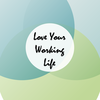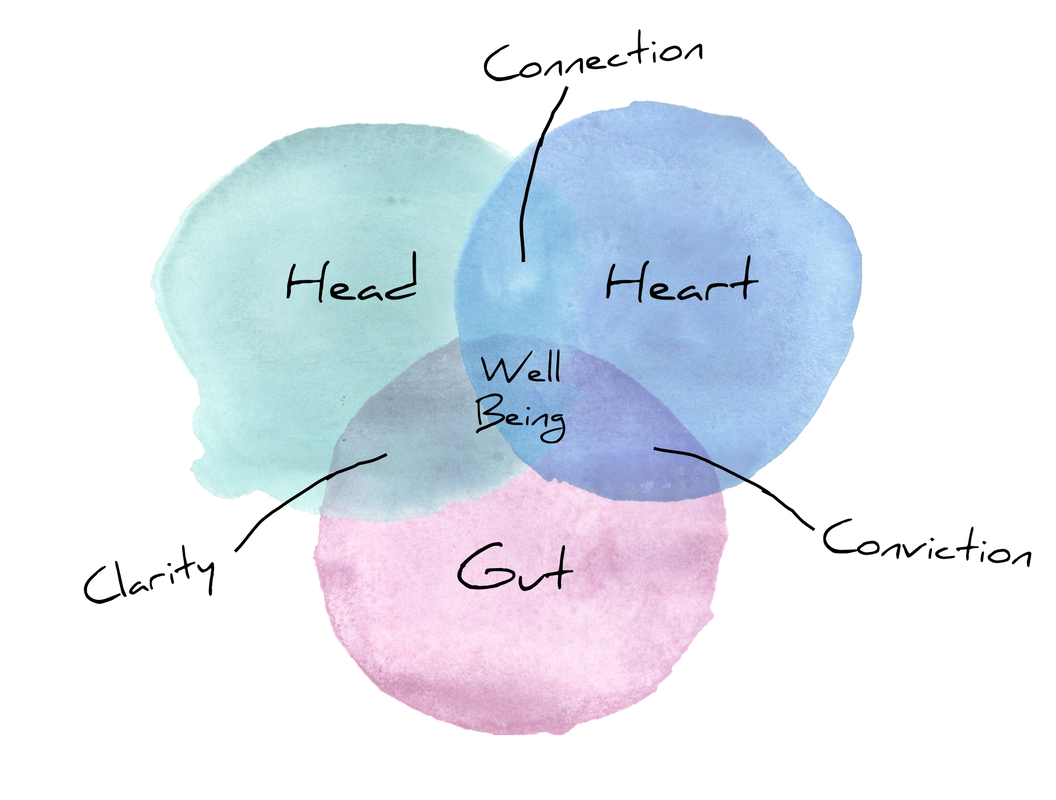|
Each of us has a need to belong, and it’s an important one because when it is not filled we are unable to continually move to new stages of awareness, growth and development (at home or at work). For many of us this need to be part of a community is filled through family and friends but we also expect that we will find belonging in our workplaces too (and so we should). When this is present we experience contentment and happiness, allowing us to extend ourselves to deeper pursuits. However, this desire to belong can be the epicenter of much angst and disappointment; from a career perspective I have seen people stay at jobs that do not nourish them because their co-workers and team are so wonderful they couldn’t leave and I have seen people leave really amazing roles because they didn’t feel they fit in with the team or their manager. I would never advocate someone should stay where they feel unwanted or unwelcome, but in the midst of disappointment or fear about belonging we can forget some universal truths. Relationships (even professional ones) require sustained attention (in essence, work) and belonging to any group begins within us.
Being beautiful perfectly imperfect beings such as we are, easy or effortlessness is what we strive for, our reward if “we do it right”. What gives us access to effortlessness is the perception that what we do matters, has purpose and is of value, which includes efforts towards relationships. We are very open to what is possible in a new relationship – the dance at the beginning may be slow or fast, but we are all hoping for the same outcome; to be accepted as one of the group. This is true of relationship building at work and in life, and while it is nerve racking, that “honeymoon” period where we allow others to get to know us (and we them) is absent of baggage and a past. A clean slate. We may feel awkward, shy, and afraid of being rejected, but at the birth of this process there is no known reason why that should happen. It is only as the relationship advances that we become aware of potential cracks and fissures in what we are building. Enter the “mess”, that thing we prefer to ignore (if we can) in the hopes that it will not come crashing down and create frustration and disappointment in our efforts to belong. Mess comes from all around us, either our own inabilities to meet or be met by others, or their inabilities in this space – sometimes it is hard to tell the difference. Mess is comprised of many contexts, mishaps, beliefs and expectations of others and ourselves and, if we are being very honest, it exists everywhere – we do not fully control it, but if we are not careful it can gain control over us. When relationship building holds feelings of belonging, the mess feels very manageable. When we are feeling frustrated in our efforts to belong, the mess is overwhelming and (in some cases) is perceived as insurmountable. Here is the thing about the mess. It can change from manageable to insurmountable (and back) at any time. Not because of our will, but because of the nature of life. ““Well, it’s a lot like walking into the ocean, and a big wave comes and knocks you over. And you find yourself lying on the bottom with sand in your nose and in your mouth. And you are lying there, and you have a choice. You can either lie there, or you can stand up and start to keep walking out to sea.” These are the words spoken by Trungpa Rinpoche, a Tibetan Monk and Buddhist teacher. He is right, waves (to continue with the metaphor) come in lulls and swells. On average fifty percent of your time is spent in a lull and the other fifty percent is spent in a swell. When building relationships has meaning and purpose for both parties, you walk together and meet the swells head on, overcoming things like unfamiliarity, misunderstandings and differences in communication styles with ease. These are the experiences we are expecting, and if it differs from this, if it is challenging or difficult, we have mess. Sometimes we can stay in and build relationships when it is messy, and sometimes we just can’t. What happens when we are no longer prepared to withstand the mess? It can happen for a variety of reasons and in a variety of ways, but essentially the crux of it is that the other party did not meet some expectation we held. This happens (for example) when someone we held in high esteem turned out to be less esteem-worthy then we thought (expectation that your new manager will recognize your good work but instead they are critical of it). In this circumstance we always have a decision – stay in the mess and work through it to bring the relationship back to it’s former equilibrium or let the mess sever any ties to belonging we hoped for or felt. The choice is ours to make. Do you let the mess control you or do you control the mess? It starts with each of us as individuals; our thresholds for what is meaningful, has purpose and is valued are all different. For some, belonging is a “nice to have” but there is no great need for a formal acknowledgement or acceptance into a group at work, relationship building takes place amongst the ebbs and flows of reality with no expectations attached to it. Most of us know expecting everyone in your life to give you a clear indication of belonging within your interactions is not realistic – this points to another facet of belonging, you need to be comfortable being in the unknown when it comes to relationships. For some though, belonging can only exist when there is expressed acknowledgment that he or she does belong…and the “lulls and swells” may present a condition whereby every challenge requires that belonging is re-acknowledged, re-confirmed for them to trust this belonging. Where you fall on this spectrum is a matter of self-confidence and an acknowledgement of your own worthiness; often it is those with the least self-assurance that need to continually be reassured by others that they belong, an indication that true feelings of belonging, trust, may be out of their reach. “Because true belonging only happens when we present our authentic, imperfect selves to the world, our sense of belonging can never be greater than our level of self-acceptance.” (Brené Brown, Daring Greatly: How the Courage to Be Vulnerable Transforms the Way We Live, Love, Parent, and Lead). We will always face waves in life; there will always be mess and imperfection (in ourselves and others). Belonging happens when we agree to work within the context of reality and enable ourselves to stay in the mess “It isn’t that the waves stop coming; it’s that because you train in holding the rawness of vulnerability in your heart, the waves just appear to be getting smaller and smaller, and they don’t knock you over anymore.” (Pema Chodron: How To Move Forward Once You’ve Hit Bottom). Belonging requires each of us to be comfortable in our own vulnerability. Where do you belong? There is real skill involved in being able to stay present and committed to a conversation or exchange with someone when there are obvious emotions present. These emotions may show up as healthy expression, like when someone tells you “I am upset because you cut me off in the meeting today”, but more often than not they may show up in body language (clenched teeth, crossed arms, lack of eye contact) long before the person you are communicating with is able to get to a place where they can realistically discuss feelings.
Most of us dread this occurrence; in fact the very presence of emotions takes a normal conversation into the realm of “difficult”, which may cause you to get emotional too. You may then become defensive (“I only cut you off because you weren’t letting anyone else contribute!”), or rationalize (“Just because I cut you off you’ve no reason to get upset – it happens all the time, we all do it!”) or we acquiesce and take the brunt (“I don’t remember cutting you off, but I guess I must have if you say I did”). Emotions are a needed and vital part of us, without them we can’t make decisions or discern the best choices/options. We have no access to our intuition without emotion, so there is much to be gained by building skills that allow us to stay in community with someone who is emotional and who may make us emotional too. The first step is recognizing emotions are in play. In this context recognizing is the process by which you cognitively understand something is present in the exchange that needs to be explored to be fully understood. Recognition is an act of knowing you need to give more space to something. Sounds simple, but it can be quite difficult when it comes to being aware of, and then giving more space to, emotions. How many times have you walked away from a conversation thinking, “What did I miss?” It means recognition didn’t take place (for you, possibly for the other person as well). This is not just about ensuring the other person is able to speak, but understanding the nuance and complexity of the context they are experiencing…this requires you to be sympathetic and curious. Inquiry is allowing curiosity to manifest itself as an empathetic and open action. When you are truly being inquisitive you are not invested in the outcome or answer, but open to whatever is present; you are open to understanding both the context and content of another person’s expression of their experience. In the end you may not share their point of view, but you can understand that it is what she/he experienced. This requires skilled listening. Listening is the intent to be open and receptive to what is being said…active listening is an action sourced in the “here and now” and comes from a place of compassion. Only when you are able to give of yourself and be present for another person will you really listen and the person you are speaking with be really heard. Inquiry and listening go hand-in-hand as they work in concert to enable things like objectivity, perspective taking and constructive two-way dialogue. Acceptance is also a player in working with emotions. Acceptance is the act of realistically acknowledging what is present and deciding (whether you agree with it or not) to work within it. You may not agree with someone getting angry about being cut-off in a meeting, but you can accept that what they are experiencing is anger, and that anger is sourced in something that is very important to the other person (like expectations of mutual respect). Once you have traversed recognition, inquiry, listening and acceptance you have access to influence. Influence is what becomes available to you when you choose to work in emotions and give them space using the four steps outlined above. If you miss one of those key steps, you will not have demonstrated credibility in your continued exchange with the other person and therefore you will have no influence. Without investing in the four previous steps you may also not be in a conscious place to continue the exchange in a constructive way, which also impacts your credibility. It is at influence that you can work actively both with the other person and the emotions present, helping to collaboratively shape what comes next. Here is an example: A: “I am hearing that what happened in the meeting today made you angry. You have said that I cut you off while you were speaking, and I can appreciate how that would make you feel angry, I would feel the same way in your position.” B: “Yes, yes it did. You were insensitive and rude!” A: “I don’t have the same recollection as you do about what happened in the meeting today, but that doesn’t mean it didn’t happen. Can you tell me what you were speaking about and how I cut you off?” B: “I can’t believe you don’t remember this! I was presenting the plan for the Monroe project today and you stepped in and went off on how critical our budget would be on this project.” A: “You are right, I did do that. I am sorry I cut you off.” B: “Well, that doesn’t help me much now does it? Now I look like I didn’t have that information when I did in fact have it, I just hadn’t gotten to it yet. I looked incompetent!” A: “I can appreciate how that made you feel, I never intended for you to feel incompetent.” B: “Then why did you do it?” A: “While you were reading aloud from your notes, our CEO looked at me and motioned to raise the issue of our budget. You likely didn’t know that since you were focused on your notes. It is perhaps why I didn’t realize I had cut you off, and for that I am sorry. What can I do to remedy this?” B: “Well there is nothing to be done about it now!” A: “You are right, what should I have done differently in that meeting?” B: “You could have brought my attention to what the CEO was looking for – I had that information, including the emphasis on the budget.” A: “You are right, that is what I should have done, and I can promise that if this situation ever arises again, that is what I will do.” B: “Our CEO is so impatient! It is likely this will happen again.” A: “It may, and now I am better prepared to handle it in a professional way, without cutting you off. I appreciate that you took the time to help me see this and to find a better path forward.” B: “OK, I am sorry if I was angry with you. I am feeling better about what happened I’m glad we talked this through.” Emotions and difficult conversations happen every day, at home, at work…everywhere. Difficult conversations don’t easily go away, they get harder the longer you avoid them. However, it is possible to have a constructive conversation if you chose to work with the emotions that emerge (both yours and the other person's), allowing everyone to walk away being heard and feeling valued. This article was inspired by the writings of Fred Kofman in his book Conscious Business: How To Build Value Through Values. An exceptional resource and excellent read. Resiliency exists to help us overcome life’s many challenges, rising above them in a conscious and positive way. Much of what is written about resiliency approaches it from an individual perspective, helping individual’s to become more resilient; supporting this is the common understanding that we cannot control how others behave, we can only control how we behave. So resiliency begins and ends with each one of us as individuals, but we don’t operate in a world that begins and ends with us, we share it with a whole lot of other people, some we like some we don’t, some we know, others are complete strangers. We are part of a wonderfully complex village that ebbs and flows around us no matter what we are experiencing as an individual. As adults we are expected to navigate this village with consistency and acumen, holding up the social fabric for each other and ourselves. Nowhere is this more apparent then in our workplaces, but how does a workforce build resiliency?
Everyone has unique needs and as such each of us has different criteria for what supports or sabotages our ability to be resilient. There is one person who sophisticatedly, but simply, captured our collective needs as human beings; Maslow’s Hierarchy Of Human Needs provides an approachable framework to demonstrate what affects a workforces’ access to resilience. At the base of the hierarchy we have physiological needs (food, water, shelter). Once those are present for us in a secure way, we need to protect them (safety, freedom from fear). When our basic needs are meet and feel secure we look for others with whom to share these resources (love and belonging). Having attained all we need to keep ourselves whole and part of a group, we then look to accomplish something enabling our self and others to know we are capable and proficient (esteem). This leads to the pinnacle of the hierarchy where we have accomplished not one or two life goals but satisfied a much larger purpose in how we conduct our self and live our life (self actualization). Our workplaces play a surprisingly large part in helping us to maintain individual access to many of those tiers in the hierarchy, thus impacting our resilience (as individuals and as part of a workforce). An individual’s professional career pursuits directly support two of those top tiers (esteem, self actualization), while at the same time keeping the bottom three tiers insured (basic needs, freedom from fear and belonging). Knowing we have accomplished a measure of success in any of the tiers enables us to focus on the next tier; knowing where you are going, what is meaningful and working towards something bigger than yourself (self actualization) gives us the building blocks we need as individuals to be resilient. Put one of the mid-tiers of the hierarchy at risk and our resilience is challenged, as we now need to focus on that tier, taking time and energy to remedy it. We obviously do not go through our day calculating where we are in this hierarchy, but we do use it to guide our larger life pursuits. When someone considers employment she or he looks for (in order or preference) a stable employer (freedom from fear, security), opportunities to be valued (esteem), work/life balance (love and belonging), and opportunities for growth/promotion (self actualization). The psychological contract we as individuals hold with employers (an unwritten and implied contract that governs our behaviours at work) means that in hiring an individual you (the employer) value her/his skills and will provide what she/he needs to maintain them and her/his employment with you in a positive way. Pull at the strings of mid-tier by laying off employees (freedom from fear) and you can see why productivity dips for many. Everyone’s thresholds for these hierarchical aspects is different; we’ve all known individuals who function well in a pressure-cooker work environment, and others who don’t – there is still much of the individual at play here. However, our workplaces have a huge impact on the human ability to be resilient based on these basic needs. So how does one build resilience in a workforce? Employees who feel valued, who know their work is recognized, meaningful and has purpose are willing to work through many challenging circumstances. A manager whose team needed to deliver stellar sales performance while working under the knowledge that their retail location was closing and everyone would be out of a job in a few months had a huge challenge ahead of her. She managed it by being fully engaged with her team, opening up communication, ensuring everyone knew the impact of their efforts and being very present in the midst of challenge with her team…and she had a plan. She didn’t know exactly what would happen, her staff could have left for other jobs before they hit their target, but she did have a plan to enable feelings of well being and deep encouragement for what they were doing. It worked; they hit their target before the closure with the team in tact. Ensuring each individual employee has purpose, meaning and value is key to both well-being and resiliency (of individuals and workforces) and when it is present you’ll see amazing results even in the most trying of circumstances. Leadership style is another area that touches on workforce resiliency. There are several models of leadership style, each highlighting around six different styles that are easily observable and present in our workplaces today (one that is reliable and used frequently is Daniel Goleman’s http://www.valuebasedmanagement.net/methods_goleman_leadership_styles.html). Only two of the six are healthy manifestations of leadership, the others offer some benefits, but ultimately don’t build sustainable trust or resilience in a workforce. What leadership style do you prevalently use? What about the other leaders in your organization? What supports the development of healthy leadership within your organization? What supports the development of emerging leaders in your organization (and using which style)? Without awareness and intent, leadership can quickly erode resiliency in workforces through the application of well intended, but poorly executed, leadership actions leading to a lack of trust between leaders and their people. Good intention is not a leadership style, and without building an awareness of the leadership styles in your organization, employees are likely being treated to a hodgepodge of leadership intent. As the saying goes, employees don’t leave organizations, they leave managers and a workforce that doesn’t trust their leaders isn’t going to stand with them when things get murky, challenging or uncertain. Workplace culture also has a huge impact. Organizations are often summed up by their employees in a brief statement (and if you are lucky it lines up with your brand); get in touch with how employees speak about your organization and you will have a good indication of the culture that is present. Become organizationally self-aware by reading your reviews on Glassdoor, not through the lens of malcontent, but with the intent to be objective. Your culture is only as good as it’s felt impact on staff. If there is top-down decision making, don’t be shocked if employees feel (and act) powerless. If mistakes are “rewarded” with punishment, don’t expect your organization to lead in innovation and creativity. “Know thyself”, and be open and objective about what your employees experience, and you will be able to build a culture that supports your organization’s purpose and direction. Without a culture that is transparent and continually supported through intent it will work against workforce resiliency, creating confusion and unmet expectations, undermining what your organization is trying to accomplish (for your employees and your customers). If you are not actively working to build workforce resilience then it will not be present in a tangible way in your people. Workforces that are not resilient may have higher than average turnover (or no turnover at all). There may be a lack of productivity when bench marked against similar organizations because employees are coming to work, working hard, but not producing (or able to produce) results because of some systemic blockage in your company. Or perhaps your workforce is so disenfranchised that employees are doing what is asked of them and no more or plagued by absence. Bottom line is everyone gets out of bed each morning to be their best self. To be the best parent, spouse, friend, employee, colleague and person they can be. Healthy and resilient workplaces tap into this intent and carry it forward every day through purpose, meaning and value in the work being asked to be done. It takes focus and intent to enable that. What are you building in your workforce? Is it resilient? Updated 14/2/2020 If you had asked me many years ago how many “centers of self” human beings had I would have said one – our brain. Delving deeper into human development has enlightened me. Truly, the brain is a very important center, it holds our cognition, it generates thoughts, processes our senses, ideas, emotions and is our center of logic, our “motherboard” if you will. However, it is not the whole of us – our conscious selves may begin and end with our brains, but it travels the whole of our bodies to be fully informed. There are three centers we rely on to make sense of our world; they are our head (thinking) our heart (feeling) and our gut (intuition). Clearly without the brain none of the information from these centers can be used, so it would be easy to mistake how thinking can help us to figure out everything we need…. except that we are far more complicated than that. ...doing things from a “thinking” place alone may not always be rewarding – it can feel "thin" or routine... Taking this into the day-to-day gives us a better understanding of how these centers work and inter-relate. Let’s us look at this within the context of something many of us do everyday, making a meal. When you make a meal leading with only your head you prepare vegetables and attend to cooking in a “make this happen” kind of way. You may be focused and attentive, but the place you are sourcing your motivation and energy from is bound by something, some “rule” (to do it in minimal time or with minimal resources, in a specific sequence, perfectly, etc.). If it takes longer than you were expecting, you may feel very frustrated and speed up to get the task done or take shortcuts. You may also end up with a very nice meal that is enjoyed by family and friends, but the pleasure you took in making it was limited. This is not to say that being in our heads or thinking is a bad thing, sometimes it is exactly what is being called for (to be efficient), but doing things from a “thinking” place alone may not always be rewarding – it can feel "thin" or routine. Something to “get through”. Leading with only our hearts allows us to truly enjoy and love what we are doing, but...may not be as practical... Looking at this same premise (making a meal) and doing so with heart can alter the motivation and energy in the task. Cooking your favourite recipes for people you love can be a very relaxing and rewarding activity; one that gives you feelings of well-being and comfort. You are using your thinking center as you cook, but the meaning itself is sourced from a place of love; you find this activity nourishing and energizing. Maybe you cooked too much food, making so many dishes there was something special for everyone, but who cares? You can send everyone home with his or her favourite leftovers (whether they want to eat them for the rest of the week or not)! Leading with only our hearts allows us to truly enjoy and love what we are doing, but without balance it means we may not be as practical or aware of things as we could be. Our intuition is great...but letting it exclusively take the lead everywhere in our life can have uneven results. Our gut, our intuition, presents yet another perspective of meal preparation. Cooking purely by intuition means you don’t use a recipe at all; you go by the “seat of your pants” creating something new and experimental. In this case you may have suspended your thinking center’s better judgement to immerse yourself in what is a creative instinctual experience. Maybe you got it just perfect and everyone says it is delicious (too bad you don’t have a recipe to share or replicate), and maybe plates stayed full and people made polite excuses. Our intuition is great for many things, guiding us in the unknown, but letting it exclusively take the lead everywhere in our life can have uneven results. ...balance in all three of the centers leads to effortlessness in what you do, supporting your energy flow and well-being... These examples are illustrative, to help give you a feel for each of the three centers, and maybe as you read them you thought of your own example of when a particular center was leading in you. What these examples point to is a need for balance. If you are feeling less then excited to do something it may hold no meaning for you (no heart) and so you will get through it using your head, which can be exhausting. Careening from instinct to instinct can get you out of a sticky mess, but the price might be in the quality or outcome of the experience. When we know what using each of these centers feels like as we move through our day, we can rely on all three of them in a complimentary triad; our intuition to guide us, our heart to lead us, and our head to move us forward. In this way we are using all the resources we have available to us, giving us access to well-rounded and balanced experiences. Most of all, balance in all three of the centers leads to effortlessness in what you do, supporting your energy flow and well-being. Couldn’t we all use more of that? Think with your head, act with your heart and trust your intuition. I am a HUGE book junkie. Not a lot of fiction, but business and professional books on widely ranging topics that shed light on aspects of our humanity. I love the smell of a nice thick book, the kind that you can grasp easily in your hand. If it is new you can smell faint wafts of the ink used for the cover. If it is an old book you get a richer more pungent odour of loamy wood. I like the feel of a book, the weight of it hinting at it’s promise to deliver material of substance; running my fingers across the cut edges of all the pages, sometimes so perfectly cut you marvel at the blade that could deliver that precision. More than the tactile sense I get from books is the potential that lies within their pages; knowing that I could be enlightened, educated, have my perspective shifted or mind blown wide-open is tantalizing to me. Every book I read has something important to tell me, sometimes it is something quite profound and at other times it is incredibly practical.
When I look at my shelves of books (I like to read paperbacks so I can mark up the pages and leave sticky notes in them) I count many enjoyable hours of reading, yet when I lay my hand on the spine of a book I have read and try to recall something more then a generic summary of the material, often I can’t. Were all those hours of reading and margin scribbling a waste of time? Not necessarily, but I did realize that for me to become really conscious in my reading I needed to take it “off the page”. Consciously reading is any reading you do when you are immersed and focused on the material you are consuming. It can happen in any medium, although it is more challenging to do on-line when there is a sidebar of flicking images and random pop-ups accompanying your material. My habit of underlining, writing in margins and using brightly coloured sticky-notes is a part of conscious reading. I am leaving myself a “breadcrumb” trail to follow later when I want to access something I have read. Sadly, going back to these amazing materials happens less often than you would think, but that is a product of my nature…lead with curiosity and then go with your gut. This doesn’t leave a lot of room for referencing materials (even when they have formed a significant part of my intuition). Which brings me to the second aspect of conscious reading, being self-aware…my approach to reading was only taking me so far and I know this because the third part of conscious reading is to understand your purpose in consuming the material. My purpose in reading a book is to have it inform me, and in so doing, applying in some tangible way what I have learned…to take what I chose to invest significant time in reading (a few days, a week…months) and apply it consciously in life. There are many pieces I read where this is not the goal; daily news, popular media, etc. are things I read too, but I am not expecting to take them with me into my life. It’s nice to be informed and it’s fun to be entertained, but rarely does this produce wisdom that fire up my synapses helping to burn new neural pathways in my brain. So, how then to take what I learn “off the page”? Once I put my mind to it, there were many ways to do this. My favourite so far is the “one simple thing” approach, which is to take one simple thing I have learned and apply it as soon as possible. This enables purpose, as I am not trying to process, synthesize and apply an entire book’s worth of knowledge. When I do this I am recalling more about the books I am reading, and referencing them (going back into their hallowed pages) to confirm something or round out my thinking. Another approach is to see if there is accompanying “book club” discussion questions, which provoke thought and take reading from a passive exercise to one that involves the application of it’s concepts and key ideas. Joining a book club is also a great way to take this into a fresh context that supports learning. If something less “assembled” works for best for you, sharing what you have learned with a friend, chatting about it over coffee, sending out a favourite quote or suggesting the book if it is a shared area of development/interest also offers opportunities to solidify what you took away from the material. I am always amazed at the depth of my re-call when I am doing this in service to “giving back” to an interested party. My journey with conscious reading wouldn’t be complete if it didn’t involve a community component; something that deeply calls to me is to contribute to others in areas of shared interest. The best way I have to do this in today’s arena of social media is to share what I am learning through my website, continually putting up what I have learned from the books I have read for others to reference – allowing others to see if it holds merit for them (http://www.chhr.ca/resources.html) How do you like to take what you have read “off the page”? |
|
|






